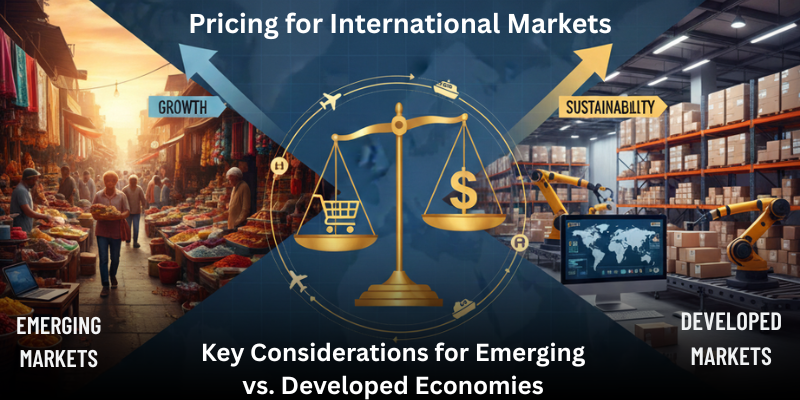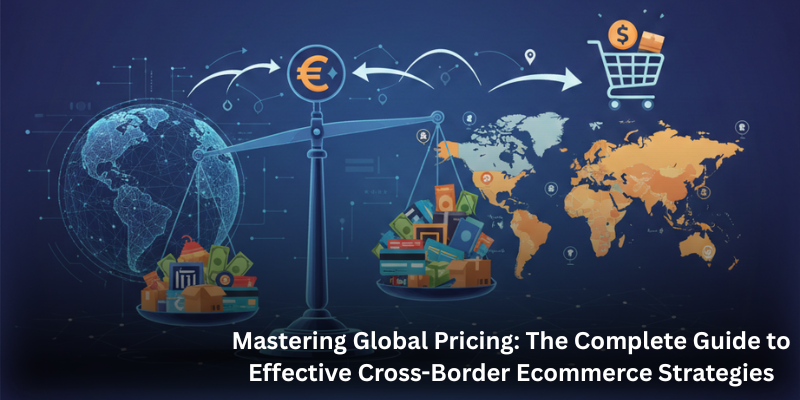Selling to consumers globally opens massive opportunities for e-commerce brands.
Cross-border e-commerce is projected to reach a value of 7.9 trillion U.S. dollars by the year 2030.
Reaching beyond domestic markets is imperative for ambitious e-commerce players. Consider these factors
With cross-border sales set to account for over 50% of e-commerce GMV in coming years, international expansion is a must on every digital retailer’s roadmap.
Choosing the right countries to sell into for your ecommerce business involves careful consideration of various factors. Picking the right overseas countries to target involves assessing:
Prioritize large markets growing at above-average rates. For example, Mexico, China, and India have enormous upside. Niche high-income markets like Singapore can work too. For eg. The India E-Commerce Market size is estimated at USD 112.93 billion in 2024, and is expected to reach USD 299.01 billion by 2029 making it one of the top markets.
Analyze if demand exists in global markets for your brand. E-commerce enablers such as Assiduus can help brands in finding the demand as well building the demand strategy.
Factor in operational hurdles shipping overseas like customs procedures, import taxes, and delivery costs. Europe is easiest for U.S. brands to export to given proximity and trade agreements. Far East destinations bring bigger logistics challenges, language complexities as well as pricing strategies.
Review payment methods, banking access, and connectivity infrastructure needed. Developing regions may have limitations. Can your platforms integrate natively into local ecosystems?
Understand laws around areas like consumer rights, product testing requirements, duties, and tax compliance obligations based on where you will warehouse and ship from.
Prioritize simpler, larger markets first when starting to go cross border, then expand reach gradually. Balance demand opportunity with operational complexity.
With your priority country list defined, executing cross-border commerce well involves getting five key elements right:
Adapting your e-commerce site to other regions is essential. Visitors expect content in their language and customized features:
Poor localization risks abandoning up to 75% of overseas shoppers and hurting conversion. Tools exist to easily handle the heavy lifting here across 100+ countries.
Blend global and local initiatives across channels like SEM, SEO, social ads, and influencer partnerships. Maintaining consistent branding while also connecting to cultural nuances takes skill:
This amplified cross-border marketing delivers volumes of qualified visitors into your sales funnel. Apply expertise here to convert interest into actual buyers.
Mastering global order fulfillment, shipping and returns means navigating customs, tracking, and insurance needs country by country:
Order and delivery complexity multiplies across borders. Partner with a logistics aggregator or managed services provider to streamline while benefiting from pre-negotiated rates.
More payment and fraud threats emerge internationally. Optimize acceptance rates while minimizing chargebacks:
Adhering to compliance obligations in dozens of countries simultaneously is daunting. Again, service partners with existing infrastructure ease this burden for entering new regions while protecting margins.
Overseas buyers expect native language support attuned to local needs:
Giving international customers VIP treatment in their context encourages repeat purchases and positive word of mouth. This offsets higher cross-border customer acquisition costs over time.
Expanding globally has too many complex moving parts to handle alone. Strategic partners with existing worldwide capabilities plug major gaps:
Rather than tackling every aspect of internationalization in-house, leveraging cross-border e-commerce accelerators with proven frameworks accelerates expansion.
With the above best practices executed well, exponentially growing your global revenue 25 50%+ annually is achievable:
Give your e-commerce managers leads and sales quotas for priority overseas markets just as you would domestically. Make international diversification central to future growth plans.
The reasons for e-commerce brands to capitalize on their global potential are overwhelming. With prudent country prioritization paired with localization, marketing, logistics, and payment capabilities managed by proven specialists, seizing this $7.9 trillion opportunity is entirely feasible.
We encourage e-commerce execs to carefully evaluate target international markets today. Craft data-driven expansion plans for your top regions supported by the right strategic solutions partners.
The window to win overseas consumers and gain a first-mover advantage is right now. Global demand for imported goods sold online shows no signs of slowing.
Gain further insights into maximizing your cross-border opportunity by booking a consultation with our in-house experts. We’re ready to help assess your international readiness while creating a tailored country launch roadmap. Contact us to get started





